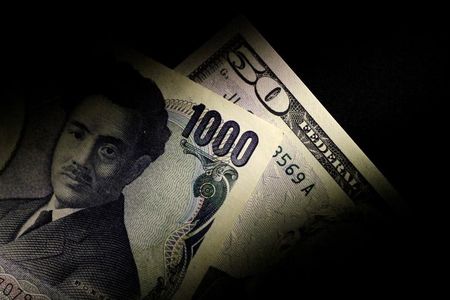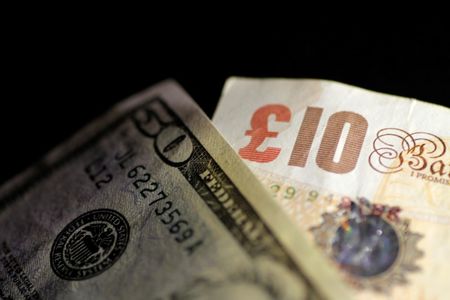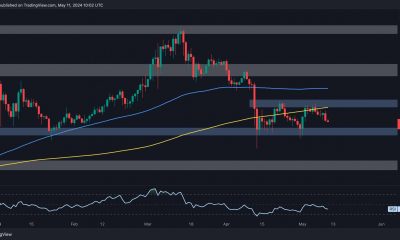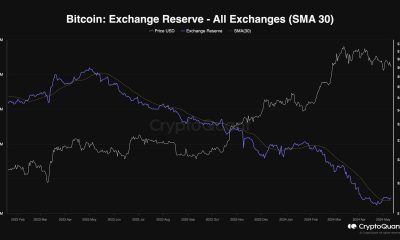Forex
Japan frets over relentless yen slide as BOJ keeps ultra-low rates

By Satoshi Sugiyama and Makiko Yamazaki
TOKYO (Reuters) -Japan is concerned about negative effects of the weak yen, finance minister Shunichi Suzuki said on Friday, in a fresh warning to speculators as the currency fell further after the central bank’s widely expected decision to hold rates steady.
The Bank of Japan kept policy settings unchanged earlier in the session following a two-day meeting, triggering a bout of volatility in the yen as it slid to below 156 levels on the dollar, its weakest since 1990.
The latest wobbles in the currency came as Suzuki, who spoke hours ahead of the BOJ decision, repeated his recent warnings against speculative moves in the yen, keeping traders on edge as to when Tokyo may intervene in the markets.
“The weak yen has both positive and negative impacts (on the economy),” Suzuki told a press conference, adding that he is “more concerned about the negative effects right now.”
Suzuki said he could not comment on specific policy measures on foreign exchange, but that authorities were closely watching currency moves and stood ready to take action.
While a weak yen boosts exports, it has become a headache for Japanese policymakers as it inflates the cost of living for households by pushing up import prices. The finance minister said that measures to combat surging prices are key policy priorities for the government.
The yen’s slide to 34-year lows against a broadly firmer dollar has been driven by wide U.S.-Japan interest rate differentials. The yield-induced downturn in the yen has gained renewed momentum on signs the Bank of Japan will go slow on raising its near-zero rates and expectations the U.S. Federal Reserve will likely delay the start of its rate-cutting cycle.
remove ads
.
INTERVENTION IS ‘FUTILE’
At a post-policy press conference, BOJ Governor Kazuo Ueda gave little away on when the next rate hike would come.
Ueda said while the impact of yen moves was usually temporary, its effects on underlying inflation could not be dismissed.
The yen briefly jumped against the dollar after Ueda’s briefing ended, but it was not immediately clear whether authorities actually stepped in. The Japanese currency was last down around 0.7% at 156.69, after temporarily spiking to 154.97, having minutes earlier slumping to fresh 34-year lows of 156.82.
“The currency takeaway is certainly disappointment from the lack of guidance from the bank,” said Rodrigo Catril, senior Sydney-based forex strategist at National Australia Bank (OTC:).
“To me, the currency market is telling us it believes that the BOJ policy is too loose and hence why the currency is so weak.”
The yen’s continued weakness has taken it firmly past 152 and 155 levels to the dollar, which traders had previously seen as a line in the sand that would prompt Tokyo to intervene in the markets. It is down around 10% on the dollar this year and has lost more than 34% of its value in three years.
Suzuki declined to comment on remarks made by U.S. Treasury Secretary Janet Yellen that the U.S. dollar has been strong and interventions by other governments in currency markets is acceptable only in rare and extraordinary circumstances.
At the parliament later in the day, Suzuki said while foreign exchange levels reflect various factors including economic indicators and price trends, interest rate differentials remain the crucial determinant.
remove ads
.
Japan last intervened in the currency market in 2022, spending roughly $60 billion to defend the yen.
Traders figure there is not much Tokyo can do to reverse the currency’s slide while interest rates and momentum are heavily skewed against it.
“(Currency) intervention in a scenario where we’re seeing upward pressure on U.S. Treasury yields is going to be a futile exercise,” NAB’s Catril said.
Forex
Asia FX weak with US inflation in sight; China tariff fears dent yuan

Investing.com– Most Asian currencies moved little on Friday as the dollar steadied from overnight declines, with focus turning squarely towards key U.S. inflation data due next week, which is likely to provide more cues on interest rates.
The Chinese yuan declined, as did currencies with trade exposure to China after multiple reports said that the U.S. was preparing more trade tariffs on Beijing.
Regional currencies took little support from an overnight decline in the dollar, as more signs of a cooling labor market reinforced bets that the Federal Reserve will cut rates in September.
But the dollar steadied in Asian trade, pressuring regional currencies as uncertainty ahead of key U.S. inflation data next week kept traders largely biased towards the greenback.
Chinese yuan weakens, USDCNY up on tariff reports
The Chinese yuan’s pair rose 0.1% as multiple reports said U.S. President Joe Biden was considering imposing fresh sanctions on certain Chinese industries, such as electric vehicles and batteries.
While the economic impact of the tariffs was unclear, such measures could attract retaliation from China, further souring ties between the world’s two biggest economies.
Other currencies with trade exposure to China fell tracking this notion. The Australian dollar’s pair fell 0.2%, while the Singapore dollar’s and the South Korean won’s pairs lost 0.1% and 0.3%, respectively.
Japanese yen remains fragile, USDJPY nears 156
Weakness in the Japanese yen persisted this week, as the pair recouped a bulk of its losses made after the government seemingly intervened in currency markets last week.
remove ads
.
The USDJPY pair rose 0.2% to 155.73 yen, trading well above lows of 152 it had hit earlier in May. Traders now saw 160 yen as the new line in the sand for Japanese government intervention.
Household spending data for March, released earlier on Friday, showed some resilience- a trend that could potentially underpin Japanese inflation expectations.
Dollar steadies, set for weekly gains ahead of inflation data
The and rose slightly in Asian trade, recovering a measure of overnight losses. But the greenback was still trading up about 0.2% for the week.
The greenback fell on Thursday after data showed a bigger-than-expected increase in weekly , furthering expectations of a cooling U.S. labor market.
This reinforced some expectations that the Fed will begin cutting interest rates by September.
But sticky inflation remained a key point of contention for the Fed, with a slew of officials warning as much this week.
Their comments put upcoming data, due next week, squarely in focus for more cues on interest rates.
Forex
More yen weakness likely – BOA Securities survey

Investing.com – More Japanese yen weakness looks likely, according to Bank of America Securities, citing its latest foreign exchange and rates sentiment survey.
At 10:25 ET (14:25 GMT), traded 0.2% higher at ¥155.83, with the pair having gained just under 2% this week as yen weakness returned.
Japanese authorities are seen having spent almost $60 billion the previous week pulling the yen away from a 34-year-low of ¥160.24 versus the dollar.
The bank’s survey has shown a consistently bullish yen bias since mid-2022, analysts at BOA Securities said, until now.
With USDJPY breaching new highs in April, investors have flipped to the largest JPY short since 2022, and there is a deep scepticism around the effectiveness of Japan’s FX intervention.
The bank said the majority of fund managers polled expect USDJPY to retest ¥160, with no one expecting a reversal to ¥150.
“While we generally share these views, the volte-face on JPY perhaps warrants near-term caution for shorts,” the bank added.
Forex
Dollar calm at end of week; sterling gains on growth data

Investing.com – The U.S. dollar steadied Friday after losing ground the previous session on weak jobs data, while the pound gained in the wake of stronger-than-expected growth numbers.
At 04:10 ET (08:10 GMT), the Dollar Index, which tracks the greenback against a basket of six other currencies, traded just higher at 105.115.
Dollar on track for small gains this week
The dollar steadied Friday, and is course for minor gains this week after losses on Thursday following the release of data showed a bigger-than-expected increase in weekly j.
This evidence of a cooling U.S. labor market reinforced some expectations that the will begin cutting interest rates by September.
However, sticky inflation remains a key point of contention for the Fed, with a slew of officials warning as much this week, comments which boosted the dollar this week.
There is “considerable” uncertainty about where U.S. inflation will head in coming months, San Francisco Federal Reserve President Mary Daly said on Thursday.
“In a scenario where inflation stays … level, just doesn’t make much further progress, then it’s not appropriate to start adjusting the rate unless we see the labor market faltering,” she added.
These comments put upcoming data, due next week, squarely in focus for more cues on interest rates.
Sterling benefits from strong growth data
In Europe, gained 0.1% to 1.2534, recovering from its lowest level since April 24 on Thursday, after data released earlier Friday showed that Britain’s economy grew by the most in nearly three years in the first quarter of 2024.
remove ads
.
U.K. expanded by 0.6% in the three months to March, the strongest growth since the fourth quarter of 2021, as the country’s economy exited the shallow recession it entered in the second half of last year.
On a monthly basis, the grew by 0.4% in March, faster than the 0.1% growth forecast.
The held interest rates at a 16-year high on Thursday, but two of the nine-person Monetary Policy Committee voted for a cut, suggesting that the central bank is moving towards such a reduction.
traded largely unchanged at 1.0783, with a light data calendar providing little impetus.
The has all but promised a rate cut on June 6, but uncertainty exists over how many further cuts the central bank will agree to this year.
Pierre Wunsch, Belgium’s central bank governor, made the case for further moves earlier this week, arguing that staying tight for too long was now a bigger risk than easing too early.
Markets currently price in 70 basis points of rate hikes for this year.
USD/JPY drifts higher
In Asia, rose 0.2% to 155.70, trading well above lows of 152 it had hit earlier in May.
Traders now see the 160 level as the new line in the sand for Japanese government intervention.
rose 0.1% to 7.2249, with the yuan weakening following reports saying U.S. President Joe Biden was considering imposing fresh sanctions on certain Chinese industries, such as electric vehicles and batteries.
remove ads
.
While the economic impact of the tariffs was unclear, such measures could attract retaliation from China, further souring ties between the world’s two biggest economies.

 Forex2 years ago
Forex2 years agoForex Today: the dollar is gaining strength amid gloomy sentiment at the start of the Fed’s week

 Forex2 years ago
Forex2 years agoHow is the Australian dollar doing today?

 Forex1 year ago
Forex1 year agoUnbiased review of Pocket Option broker

 Forex2 years ago
Forex2 years agoDollar to pound sterling exchange rate today: Pound plummeted to its lowest since 1985

 Cryptocurrency2 years ago
Cryptocurrency2 years agoWhat happened in the crypto market – current events today

 World2 years ago
World2 years agoWhy are modern video games an art form?

 Stock Markets2 years ago
Stock Markets2 years agoMorgan Stanley: bear market rally to continue

 Economy2 years ago
Economy2 years agoCrude oil tankers double in price due to EU anti-Russian sanctions

































